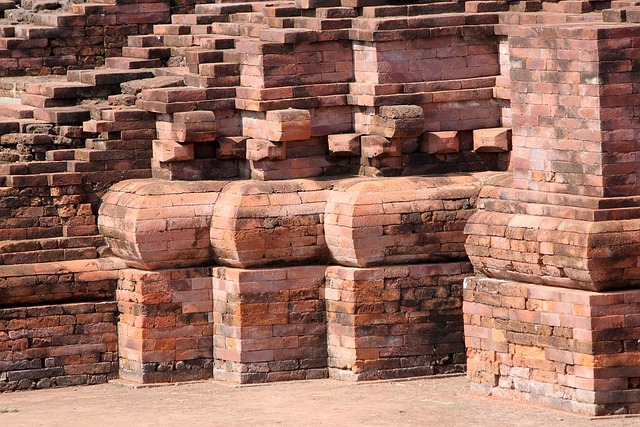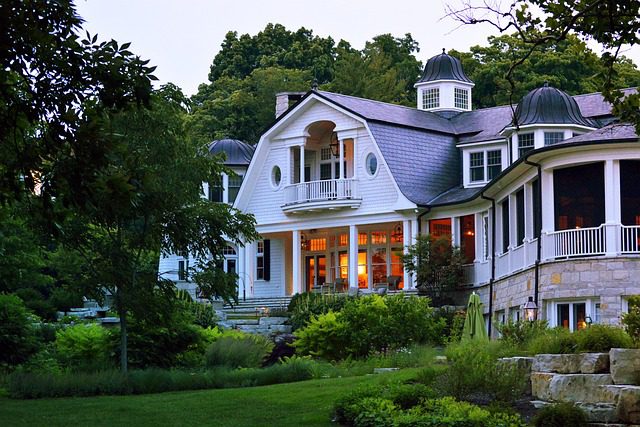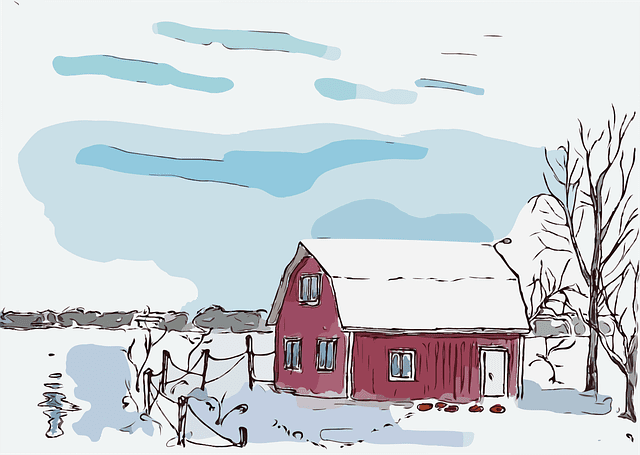The Ancient Jewel of Sumatra’s Heartland
In the heart of Riau’s verdant expanse stands a relic of a bygone civilization — Candi Muara Takus. This ancient Buddhist temple complex whispers stories of grandeur, faith, and intellect from an age when Sumatra was a nexus of trade and spirituality. Time may have weathered its bricks, yet the aura of sanctity lingers in every contour. Candi Muara Takus is not merely an archaeological site; it is a spiritual beacon from Indonesia’s golden past.
The Geographic Allure of Muara Takus
Nestled Along the Kampar River: A Setting of Serenity and Significance
The temple rests beside the Kampar River, a lifeline that nourished both fields and faith. The river’s meandering flow seems almost reverent, circling the sacred site as though protecting it from oblivion. Ancient builders chose this location not by chance but through deep spiritual intuition—believing that proximity to water signified purity and renewal.
The Surrounding Landscape: Where Nature Meets Sacred History
Dense forests once cloaked the terrain, guarding the temple in natural secrecy. Today, tranquil fields and distant hills create a tableau of harmony where nature and heritage intertwine. The gentle rustle of bamboo and the hum of cicadas remind visitors that Muara Takus remains alive — a place where nature continues to guard history’s soul.
Tracing the Origins of Candi Muara Takus
A Legacy of the Sriwijaya Empire
Muara Takus emerged during the reign of the mighty Sriwijaya Empire, the maritime power that once dominated Southeast Asia. As a hub of Buddhist learning, Sriwijaya’s reach extended from India to China. This temple complex symbolized both devotion and diplomacy, a monument that anchored faith along the Kampar’s fertile banks.
Early Mentions in Historical Chronicles and Chinese Records
Ancient Chinese annals speak of a great Buddhist center in Sumatra visited by monks seeking enlightenment. These records align with the geographical descriptions of Muara Takus, lending credence to its status as one of the region’s earliest religious sanctuaries.
Theories on Its Founders and Original Purpose
Some scholars attribute its creation to Sriwijayan monarchs as a ceremonial center, while others believe it was a sacred waypoint for monks traveling the Buddhist pilgrimage route. Whatever its genesis, the temple was undoubtedly a nexus of faith, philosophy, and cultural exchange.
Architectural Grandeur in the Wilderness
An Overview of the Temple Complex Layout
The temple complex is encased within an earthen wall, suggesting both sanctity and protection. Inside lies an array of stupas and shrines aligned with precision. Their symmetrical placement reveals a deep understanding of cosmic geometry — each structure part of a grand spiritual design.
The Intricate Brickwork: A Testament to Lost Craftsmanship
The artisans of Muara Takus employed kiln-fired bricks bound by natural adhesives of sand and clay. The meticulous alignment and resilience of these bricks are astonishing, surviving centuries of monsoon rains and humidity. The craftsmanship reflects a level of technical mastery rarely seen in Sumatra’s architecture.
The Use of River Stone and Terracotta: Materials of Symbolic Meaning
River stones symbolize continuity and eternity, while terracotta signifies life and regeneration. Their combined use in Muara Takus represents the unity of the earthly and the divine — a philosophical expression sculpted in stone.
The Central Stupa: Heart of the Sacred Compound
Design Influences from India and Mainland Southeast Asia
The main stupa rises in quiet majesty, echoing design principles seen in ancient Indian and Burmese temples. Its lotus-like form connects it to Buddhist cosmology — a manifestation of Mount Meru, the mythical center of the universe.
Symbolism of the Bell-Shaped Structure
The bell form embodies harmony between heaven and earth. It calls forth spiritual awakening, guiding believers toward nirvana. The rounded base represents the world of desire, while its narrowing pinnacle reaches toward ultimate enlightenment.
Restorations and Archaeological Discoveries
Excavations have unearthed relics, inscriptions, and ceremonial vessels buried within. Restoration efforts have been delicate, preserving the authenticity of the original design while preventing further decay. Each restoration breathes life into the silent stones once more.
Companion Structures Within the Complex
Candi Tua: The Tower of Antiquity
The largest and oldest structure in the complex, Candi Tua exudes solemn grandeur. Its towering form once dominated the skyline, a visual symbol of spiritual authority.
Candi Bungsu: The Temple of Duality and Devotion
This smaller shrine mirrors Candi Tua but with subtle variations — twin stupas symbolizing the balance between compassion and wisdom.
Candi Mahligai: A Spire Reaching Toward Enlightenment
Candi Mahligai, slender and elegant, stretches skyward like a prayer turned to stone. Its delicate proportions suggest both grace and aspiration.
Candi Palangka: The Foundation of Forgotten Rituals
Though less preserved, Candi Palangka holds secrets of ancient rituals. Archaeologists believe it once supported offerings or sacred fires used in Buddhist rites.
Religious and Cultural Essence of the Site
Buddhist Symbolism and Tantric Influences
Muara Takus blends Mahayana and Vajrayana traditions, evident in its iconography and geometric symbolism. Each curve and angle resonates with spiritual intent — a silent dialogue between human devotion and divine order.
The Role of Candi Muara Takus in Pilgrimage Traditions
For centuries, monks and pilgrims journeyed to this temple seeking enlightenment. Even today, its sanctified air attracts those who come not just to observe, but to feel.
Ceremonial Functions and Ancient Offerings
Fragments of clay seals and ritual objects suggest that the site once hosted ceremonies honoring both the Buddha and ancestral spirits. Offerings of rice, incense, and flowers would have perfumed the dawn air.
Unearthing the Past: Archaeological Excavations and Findings
The Early Expeditions of Dutch Archaeologists
In the 19th century, Dutch explorers stumbled upon Muara Takus, half-buried under layers of earth and vegetation. Their sketches and notes brought the site back into the world’s awareness.
Artifacts and Inscriptions Revealing a Spiritual Nexus
Among the discoveries were stupika (miniature stupas), inscriptions, and Buddhist relics. These remnants hint at a thriving monastic community once flourishing here.
Modern Archaeological Efforts and Preservation Techniques
Today, conservationists employ advanced mapping and drone imaging to study the site without disturbing its fragile foundations. Preservation remains a delicate dance between history and time.
The Enigma of the Temple’s Abandonment
Decline of the Sriwijaya Civilization
As trade routes shifted and rival powers rose, Sriwijaya’s influence waned. With its fall, many of its sacred centers, including Muara Takus, were deserted.
Shifts in Trade, Faith, and Political Power
Islam’s spread across Sumatra transformed the religious landscape. Temples like Muara Takus faded into obscurity, their chants replaced by new calls to prayer.
The Silence of Centuries: Nature’s Reclamation
For centuries, vines and roots wove themselves around the stupas, embracing the ruins in a green shroud. The forest kept the temple’s secrets — until human curiosity returned to awaken it.
Reawakening Through Conservation
National Recognition and Cultural Heritage Status
In 2009, Candi Muara Takus was designated a National Cultural Heritage site. This recognition marked a turning point in efforts to preserve Sumatra’s spiritual legacy.
Restoration Projects and Local Involvement
Villagers and scholars work side by side, ensuring that conservation efforts honor both history and community identity.
Challenges in Balancing Preservation and Tourism
Rising tourist interest brings both hope and risk. The challenge lies in welcoming visitors while safeguarding the sanctity of the sacred site.
Symbolism and Sacred Geometry in Design
Alignment with Celestial Patterns
The layout aligns subtly with the movement of the sun and stars, reflecting Buddhist cosmological principles. It is architecture in conversation with the cosmos.
The Spiritual Meaning Behind Architectural Proportions
Proportions follow sacred ratios, mirroring the balance between physical and metaphysical realms. Each line whispers of universal harmony.
Ritual Pathways and the Cosmic Blueprint
Pilgrims once followed a circular route around the stupas — a symbolic journey mirroring the path to enlightenment.
Legends and Oral Traditions Surrounding Muara Takus
Tales of Hidden Treasures Beneath the Temple Grounds
Local legends speak of golden relics buried beneath the temple’s heart, guarded by unseen forces. Few dare to disturb its rest.
The Guardian Spirits and Mystical Beliefs of Local Villagers
Elders recount tales of spirits who protect the temple from desecration. Offerings of flowers and incense are still made to appease these ethereal custodians.
Echoes of Ancient Chants in Modern Folklore
At dusk, villagers claim to hear faint chants carried by the wind — echoes of monks who once filled the air with sacred recitations.
Muara Takus in the Context of Indonesian Buddhism
A Bridge Between Indian and Indigenous Beliefs
Muara Takus stands as a living synthesis — Indian in inspiration, yet profoundly local in soul. Its rituals, materials, and motifs reflect Sumatra’s adaptation of global spirituality.
Connections with Other Buddhist Sites in the Archipelago
The temple shares stylistic affinities with Borobudur and Muara Takus’ contemporaries in Jambi and Palembang, forming an intricate web of spiritual kinship.
The Temple’s Role in the Spiritual Map of Southeast Asia
As part of Sriwijaya’s vast Buddhist network, Muara Takus once linked scholars and pilgrims across oceans — from Nalanda in India to Ligor in Thailand.
Journey to the Sacred Site: How to Visit Muara Takus Today
The Route to the Remote Riau Highlands
Located in Kampar Regency, the temple is accessible via a scenic drive from Pekanbaru, weaving through rural landscapes and quiet villages.
What to Expect Upon Arrival
Visitors are greeted by tranquility — a well-maintained complex framed by gentle hills, where ancient stones bask in the golden light of Sumatra’s sun.
Traveler Tips and Responsible Tourism
Respectful attire, silence, and mindfulness are encouraged. Every step within the compound should be taken as an act of reverence.
Cultural Revival and Local Traditions
Annual Festivals and Community Ceremonies
Each year, local communities and Buddhist groups hold festivals celebrating enlightenment and peace, reviving the ancient spirit of devotion.
The Revival of Buddhist Practices in Riau
In recent years, monks have returned to perform rituals here — subtle affirmations of faith rekindled after centuries of quiet.
Local Handicrafts and Heritage Tourism
Visitors can find handmade artifacts, batik with Buddhist motifs, and local delicacies that connect heritage with livelihood.
Muara Takus and Academic Studies
Key Research from Indonesian and International Scholars
Archaeologists and historians continue to study Muara Takus to decode its chronology, influences, and symbolic language.
Interpretations of Symbolism, Architecture, and Ritual Use
Debates persist on whether the temple served purely monastic purposes or functioned as a royal sanctuary. Its mysteries fuel ongoing academic fascination.
The Temple as a Focus of Cross-Cultural Study
Muara Takus is more than a monument; it is a cultural crossroads where maritime trade, religious philosophy, and artistic expression converged.
Environmental Harmony and the Temple’s Setting
The Kampar River’s Lifeline to the Ancient Builders
The river provided clay, stone, and sustenance. It remains the pulse that once gave birth to civilization’s heartbeat here.
Flora and Fauna Around the Complex
The area teems with tropical biodiversity — a living testament to coexistence between humanity and nature.
The Ecological Value of Heritage Preservation
Protecting Muara Takus means protecting its environment. Cultural preservation and ecological balance are intertwined destinies.
Comparing Muara Takus with Other Indonesian Temples
Borobudur and Muara Takus: Contrasts in Scale and Symbolism
Borobudur dazzles with its grand design; Muara Takus captivates with its humility and harmony. One proclaims power, the other whispers peace.
Prambanan’s Hindu Grandeur Versus Muara Takus’ Buddhist Serenity
While Prambanan celebrates divine complexity, Muara Takus radiates contemplative simplicity — two expressions of sacred truth.
The Distinctive Sumatra Style in Stone and Brick
Unlike Java’s volcanic stone temples, Muara Takus reveals Sumatra’s signature — brickwork artistry steeped in local ingenuity.
Spiritual Reflections and Timeless Lessons
The Enduring Message of Faith and Impermanence
Time erodes, yet faith endures. Muara Takus stands as a meditation on impermanence — a silent teacher in an age of haste.
Lessons from an Empire That Valued Enlightenment Over Conquest
The Sriwijaya legacy reminds us that greatness lies not in domination, but in illumination.
The Future of Muara Takus: Between Reverence and Modernization
Government Initiatives and Global Recognition
Plans are underway to nominate Muara Takus as a UNESCO World Heritage Site — a fitting honor for its global cultural value.
Sustainable Tourism and Digital Preservation
Virtual archives and eco-conscious visitor management ensure the temple’s survival in both digital and physical realms.
Inspiring New Generations to Protect Ancient Wisdom
For Indonesia’s youth, Muara Takus is a reminder — that the past is not a relic to be admired, but a wisdom to be inherited.
Conclusion: Muara Takus—Where History Breathes in Silence
Amid the quiet plains of Riau, Candi Muara Takus continues to breathe — its silence eloquent, its presence eternal. Every brick holds a story, every shadow a memory of devotion. Here, history is not dead; it simply meditates, waiting for those who still know how to listen.




